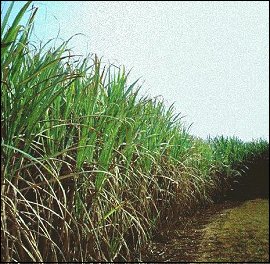Labor on the island was divided according to racial stratification and freedom status. By the late 1700s the economy of Cuba was changing. This was a transition from a market based on tobacco and leather to one focused almost purely on sugar. With this transition brought a new interest and need for African slaves.
The cost of sugar in Europe had nearly tripled since the slave revolt on St. Domingue and the elites of Cuba were preparing to reap the rewards. Much of the lands that had been previously devoted to tobacco were being changed to accommodate the new "gold mine" of sugar. By 1827, approximately 1,000 sugar mills had sprang up on the island and with their development came the need for a cheap labor source. From 1816-1820 over 100,000 African slaves were brought to Cuba. These came mostly from the Gold Coast of Africa and seemed to have served in the rigorous sugar industry. They provided the manual labor needed to make the plantations successful for their masters.
Plantation owners were often Spanish born or of direct Spanish decent. These were the elites of Cuban society comprising those who were more racially pure and financially "secure". There were many of these mills in the early development of the sugar industry on Cuba as there was little infrastructure to aid processing of the product. In fact, it is the sugar industry, which caused such infrastructural advancements to be made. With the development of sugar, these elite members of society were becoming even wealthier often spending their money on extravagant balls and cock fights. However, this stratification of labor was not indicative of the common Cuban.
There was another large group of free people on the islands. These were free Europeans and people of color. They often skilled tradesmen such as carpenters, blacksmiths, and workers and overseers for others plantations. This group also included small landowners. Labor in this class was very different from that of the elites. To survive, this class was forced to work and make a living. They did not have the extravagance afforded to the more prestigious Cubans. However, they were still not the bottom of the labor stratification. That position was reserved for the slave.
Slavery in Cuba developed with the sugar industry. This labor-intensive crop required hard, dangerous work that was delegated to forced labor. Slaves on Cuba, as well as most Caribbean islands, had few rights and were subjected to the will of their owner. They were forced to plant, cultivate, harvest, process, and pack the sugar. This was strenuous work and most all slaves were involved, young and old. Slaves had no land or property of their own and were forced to work for the sole benefit of their masters and were thus, the bottom of the labor classes on Cuba.
Labor groups developed along social classes and became rigidly defined with the birth of the sugar industry of Cuba. The Lives and roles of elites, free class, and slave laborers were vastly differentand rigidly predicted, at least for a time.
Sources:
Staten, Clifford L. (2003). The History of Cuba. (pp. 11-31). Westport, CT: Greenwood Publishing Group
Wright, Irene. (1916). The Early History of Cuba, 1492-1586. (pp. 5-7). New York, NY: The Macmillan Company
Labor groups developed along social classes and became rigidly defined with the birth of the sugar industry of Cuba. The Lives and roles of elites, free class, and slave laborers were vastly differentand rigidly predicted, at least for a time.
Sources:
Staten, Clifford L. (2003). The History of Cuba. (pp. 11-31). Westport, CT: Greenwood Publishing Group
Wright, Irene. (1916). The Early History of Cuba, 1492-1586. (pp. 5-7). New York, NY: The Macmillan Company
